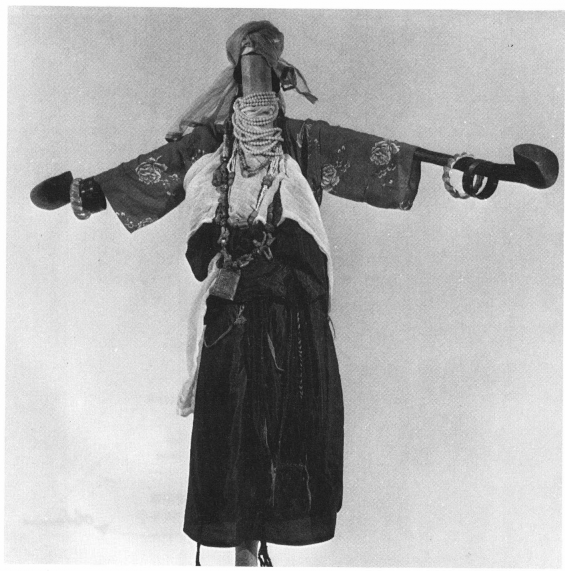Pre-Islamic Morocco had its own mythology, gods, rituals and sacrifices and Anzar was one of the powerful figures that ruled the Berber society centuries ago. In modern Morocco, Anzar is a synonym for rain for the Amazigh community.
However, the origins of this word refer to a «lord», a god that was respected and feared in pre-Islamic Morocco and North Africa. «Anzar is a beneficial element that strengthens vegetation and ensures the growth of herd», wrote Algerian Berberologist Salem Chaker and French historian Gabriel Camps in the «Encyclopédie berbere» (Berber Encyclopedia) (Volume 6, 1989, Peeters Publishers).
For the two experts, Anzar is a sign of fertility and an important factor of fruitfulness and productiveness. This explains the story behind this powerful «god».
Anzar and his beautiful fiancée
According to Henri Genevois, a priest that lived in Algeria and was interested in Berber Mythology, the story of Anzar involved a woman, a river and people who relied heavily on rain to survive. «According to this legend, the Rain lord Anzar, came to wed a maiden of wonderous beauty. Then, because of their union the river flowed once more and greenery covered the earth», wrote MondeBerbere.
The legend says that Anzar fell in love with a woman and wanted to make her his fiancée. «She was accustomed to bathing in a river of silver reflection. When the Master of the rain went down on ground and approached her, she would shy away from fear, and Anzar would withdraw», wrote the same source, translating a Berber poem reciting the Anzar myth.

Rejecting Anzar angered him and his anger affected the herd, the river and the resources Berber tribes relied on to survive. But he did not lose hope in seducing the woman he desired the most. «Like the flash, I split the immensity of the sky, O you, star more brilliant than the others, give me then the treasure which is yours or I will deprive you of this water», threatened the lord of rain.
Fearing what would people say about their love, the beautiful woman told Anzar that she is convinced they were made for each other. «To these words, the Master of water abruptly turned the ring on his finger: suddenly the river dried up and he disappeared», narrated the same poem.
Out of despair and fear for her people, the young girl started crying and calling for Anzar, the latter suddenly appeared «in the shape of an immense flash … He tightened the girl against him, the river started flowing again, and all of Earth was covered of greenery».
With this romantic yet supernatural ending the story of Anzar was concluded and an ancient ritual started. According to experts, tribes started sacrificing a virgin at the time of drought for Anzar to seek his help and call for rain.
Talghenja, the rain ritual
The ritual is called the «Bride of Anzar», «Taghnja» or «talghenja». According to Henri Genevois, the practice is based on five main steps : «Preparing the 'bride', accompanying her to the doors of the sanctuary with women standing on the threshold throwing water on her to offer food and join the group, preparing a communion-meal near the sanctuary, having the 'bride' laid bare, circumambulating the sanctuary (7 times) while she entreats Anzar, the women sing, the young girls sing and play with a ball – the latter is supposed to fall into a hole prepared for it».

The Anzar ritual survived and took different forms in modern Morocco. In different regions of the Kingdom, a ladle is dressed as a bride and is carried by women in a parade, singing for rain and Anzar.
«Several observations or stories suggest that the current doll is only a simulacrum intended to replace the real 'fiancée' offered to Anzar», wrote Camps and Chaker. They explain that people «wrap the wooden doll», the ladle and the spoons which signify food.
Understanding nature
According to Moroccan Berberologist, Lhoucine Ait Bahssine, the term speaks for itself. Speaking to Yabiladi, he explained that «Talghenja» means wrapping the spoon or the ladle in a piece of fabric.
The practice in itself portrays how Berbers were attached to nature and how their rituals and beliefs were only an explanation of how nature behaved around them.
«In North Africa, since ancient times, before embracing the three heavenly religions, social and political phenomenon and festivities were associated with the four seasons winter, spring, summer, and autumn», wrote Ait Bahssine on Al Hiwar Al Motamadin.
For the researcher, the Anzar ritual is one of those explanations, established to restore balance and explain a simple phenomenon, namely drought.





 chargement...
chargement...













